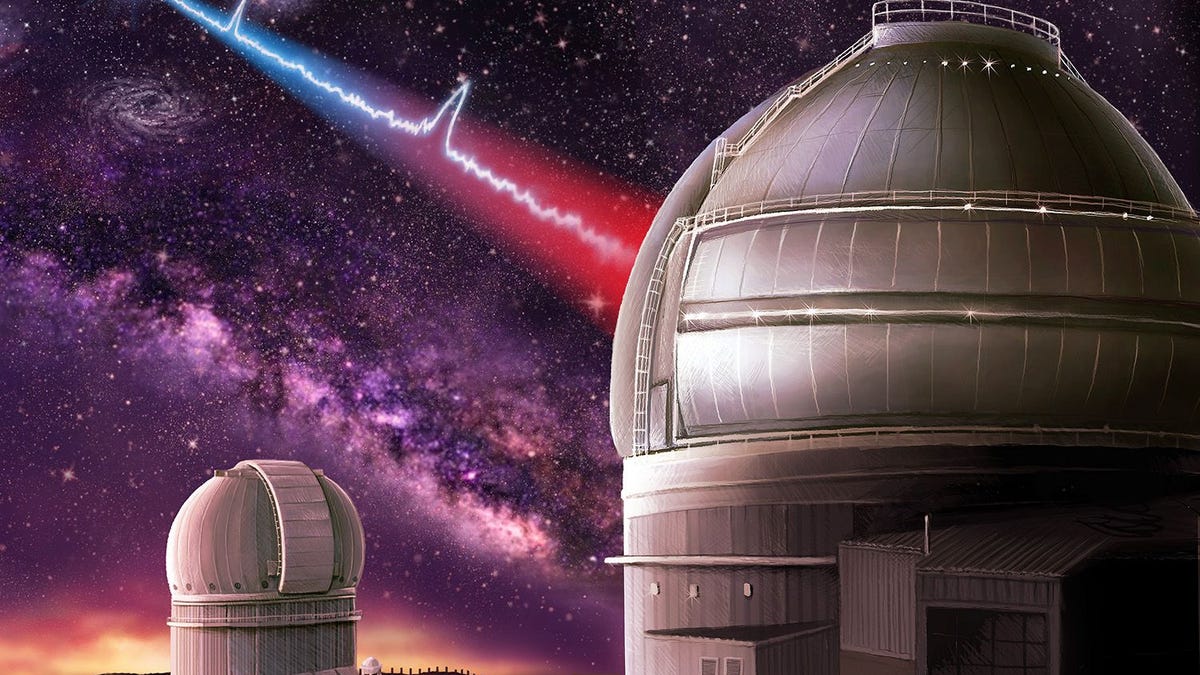Space's mysterious fast radio bursts: What the heck are they?
We've entered a new era of research into one of the newest phenomena in all of space. Here's what you need to know.

We're already picking up more signals from deep space.
Fast radio bursts from space are a uniquely 21st-century mystery. They were first identified just 12 years ago and, up until very recently, almost nothing was known about them and where they come from.
But new radio telescopes in Australia and Canada are already making it much easier to detect fast radio bursts, or FRBs, and here's a look at what we've learned so far.
FRBs are essentially just what they sound like -- radio signals from somewhere in deep space that last for just milliseconds.
"Fast radio bursts are exceedingly bright given their short duration and origin at great distances, and we haven't identified a possible natural source with any confidence," Avi Loeb, a Harvard-Smithsonian Center for Astrophysics theorist, said in a press release back in 2017.
Since then, an "FRB Theory Wiki" hosted by the McGill Space Institute has grown to include over four dozen possible explanations ranging from "annihilating mini black holes" to "alien light sails," although most explanations at this point have something to do with pulsars or neutron stars.
An (extraterrestrial) intelligent explanation?
It should really be no surprise that, as with most space stuff that can't yet be explained without a doubt by some natural phenomenon, aliens have been proposed as a possibility, including by Loeb himself.
"An artificial origin is worth contemplating and checking," he says.
Loeb and his colleagues worked out how much power would be needed to send such signals across the universe. Turns out it would require covering two Earth-size planets with energy collectors, leading Loeb to theorize that such a massive project might be used not to communicate, but to propel starships using high-energy beams.
While aliens might be the most exciting possible explanation, that doesn't mean they're the most probable. There are, after all, natural phenomena in the cosmos that could generate such signals and are known to actually exist, which is more than we can say for extraterrestrials.
In addition to neutron stars, there's also exploding black holes, magnetars and hypothetical blitzars that could be throwing off radio emissions that eventually make it to us.
Or maybe there are different types of FRBs out there or different explanations we haven't even thought of yet.
At least one case of an FRB was later explained by someone at an observatory opening a microwave oven door while it was running.
Few encores
One aspect of FRBs that has made them so hard to trace back to a source is that they rarely seem to repeat. For the first decade of FRB research, they were all just detected and never heard from again. Then, in January 2017, researchers announced they'd finally identified that FRB 121102 repeats.
This allowed them to trace the blinking signal to a surprising source: a distant dwarf galaxy 3 billion light-years beyond the Milky Way.
"That's weird isn't it? You'd expect to find FRBs where there are more stars ... more stars means more neutron stars," Shriharsh Tendulkar of McGill University and the discovery team said at the time.
But after the CHIME radio telescope in British Columbia came online in late 2017, scientists had a new and highly valuable stream of FRB observations at their disposal. As of August 2019, a total of a dozen repeating fast radio bursts have now been confirmed or are in the process of being confirmed.
Notably, one of the repeating FRBs picked up by the new Canadian Hydrogen Intensity Mapping Experiment (CHIME) appears to be much closer than the first couple observed. While those came from somewhere billions of light years away on the other side of the universe, this newly heard one could come from the edge of our own galaxy.
As more new observing equipment comes online, our understanding of FRBs could begin to crystallize very soon.
Researchers have also been able to integrate artificial intelligence with one telescope in Australia to detect FRBs in real-time as they arrive at Earth. That could rapidly speed up the work of studying the odd signals, which previously required combing through past observations taken months or even years previous.
At this rate, we might soon be able to stream FRBs live as they arrive at our planet. Podcasts are fun, but I now look forward to a golden age of (tiny) bite-sized alien radio broadcasts.
Originally published May 26, 2017.
Updated Aug. 20, 2019, with additional information.

